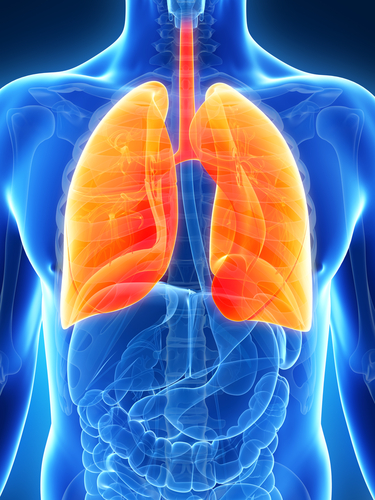 Pulmonary arterial hypertension and lung cancer may share something in common: a molecule known as sphingosine-1-phosphate (S1P), which is produced by the enzyme sphingosine kinase 1 (SphK1). The molecule has been associated with abnormal lung cancer cell growth, and researchers at the University of Illinois at Chicago are now linking it to pulmonary hypertension.
Pulmonary arterial hypertension and lung cancer may share something in common: a molecule known as sphingosine-1-phosphate (S1P), which is produced by the enzyme sphingosine kinase 1 (SphK1). The molecule has been associated with abnormal lung cancer cell growth, and researchers at the University of Illinois at Chicago are now linking it to pulmonary hypertension.
“The characteristic proliferation of cells that line the blood vessels in pulmonary hypertension is similar to the abnormal growth and reproduction of cells that form cancerous tumors,” said Dr. Jiwang Chen, a research assistant professor at the UIC College of Medicine, in a news release from the college. “We wanted to see if SphK1 and S1P were involved in the development of pulmonary arterial hypertension.”
To investigate the notion of S1P involvement in pulmonary hypertension, Dr. Chen and colleagues analyzed S1P levels in lung tissue samples from pulmonary arterial hypertension patients and pulmonary arteries from mice with hypoxia-mediated pulmonary hypertension. The team described their results in the journal article entitled, “The Sphingosine Kinase 1 / Sphingosine-1-Phosphate Pathway in Pulmonary Arterial Hypertension,” published in the American Journal of Respiratory and Critical Care Medicine.
“Our results yield two new potential targets for the development of drugs to treat or prevent the progression of pulmonary arterial hypertension,” eluded Dr. Chen, as it was found both SphK1 and S1P are elevated in cases of pulmonary arterial hypertension. Presumably, the signaling molecule can act to enhance proliferation of cells in the blood vessel walls, causing the vessel walls to narrow and increase blood pressure. Indeed, by over-expressing SphK1 and stimulating S1P in mice, researchers saw a proliferation of pulmonary artery smooth muscle cells.
[adrotate group=”4″]
Armed with a potential cause for pathology, the research team investigated pharmacological interventions to prevent the development of pulmonary arterial hypertension in the mice. The team administered inhibitors of SphK1 and the receptor for S1P (S1PR2) and were able to prevent hypoxia-mediated pulmonary hypertension in mice susceptible to developing the condition. “By blocking the binding site for S1P or suppressing the production of S1P, like we did in our experimental rodent model, we can reduce the proliferation of pulmonary artery smooth muscle cells, which is a major contributor to pulmonary hypertension,” concluded Dr. Chen.

